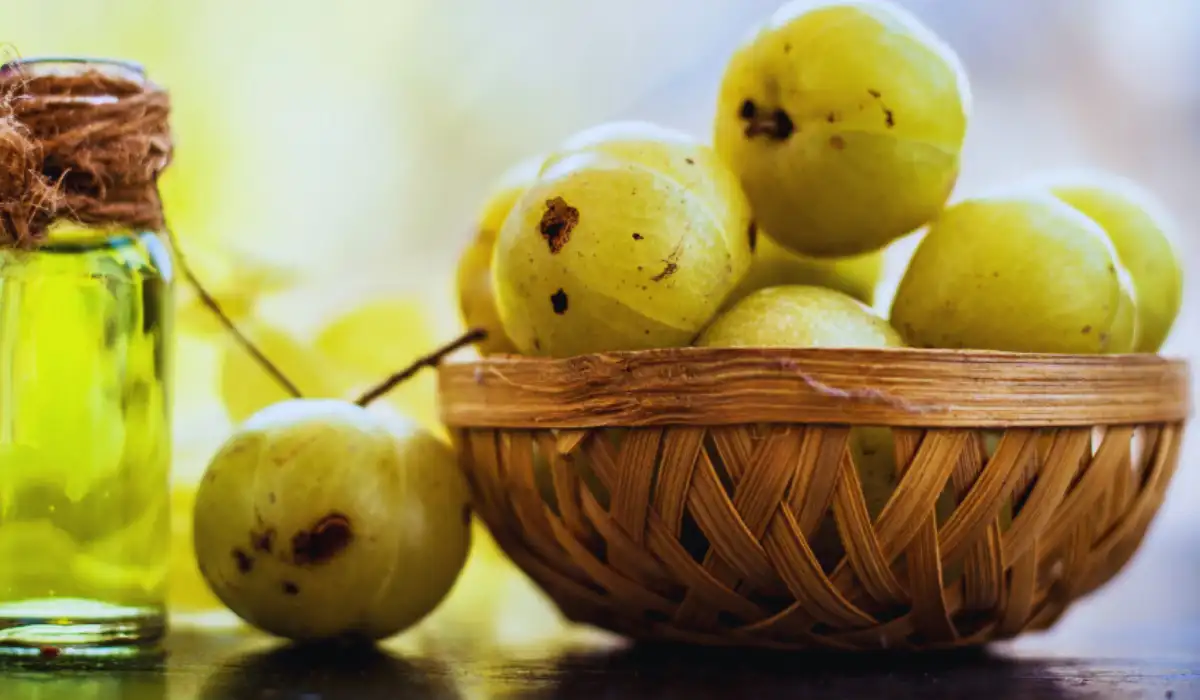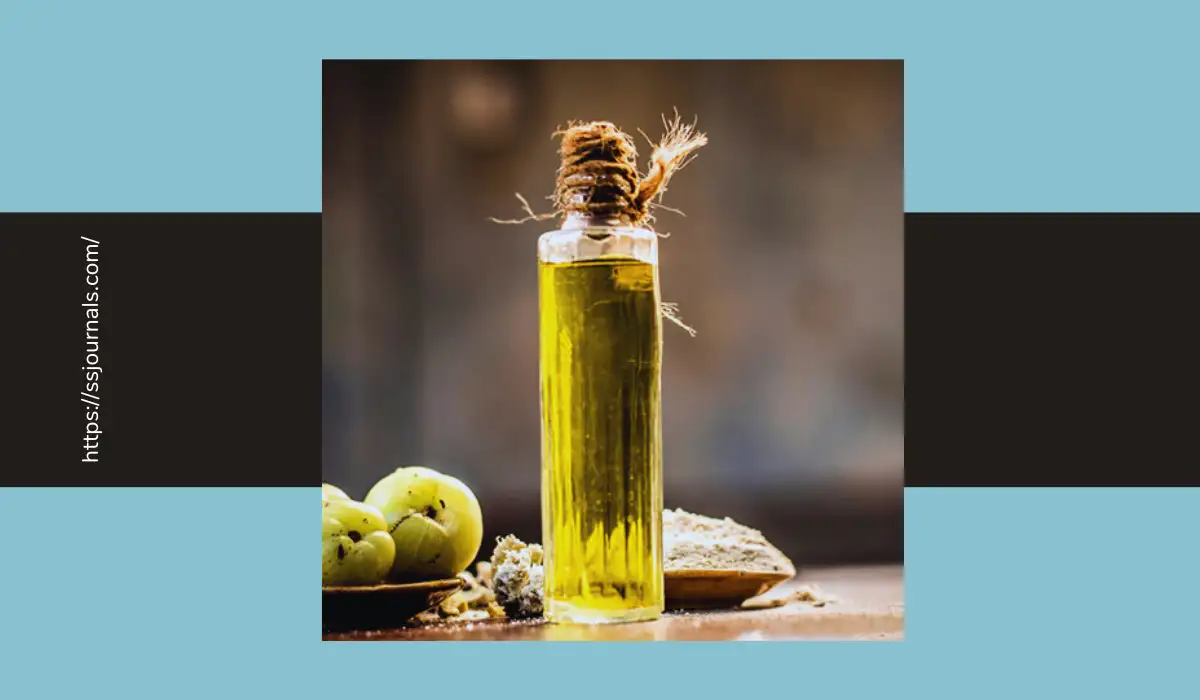Amla oil has become increasingly popular as a natural solution for various hair concerns. Derived from the Indian gooseberry (amla), this vitalizing oil contains antioxidants and fatty acids that nourish the scalp and strands.
With growing scientific evidence supporting its ancient use, amla oil promises to boost hair growth, minimize loss and thinning, improve texture and shine, and prevent premature greying.
As people seek safer, cost-friendly alternatives to conventional hair treatments, the profound amla oil for hair benefits warrants exploration. Understanding its extracted sources, composition, and ideal usage will clarify its potential to enhance hair health.
This article will outline the origins, therapeutic chemical profile, and specific profits of utilizing amla oil for hair, analyzing research that underlies age-old traditions. We will also summarize best practices for leveraging Amla oil for hair health and growth.
What is Amla Oil?

Now, let’s understand what is amla oil before getting into the details. Amla oil has been utilized in Ayurvedic medicine for thousands of years as an essential source of plant-based fatty acids, vitamins, and minerals beneficial for total body wellness.
Sometimes referred to as Indian gooseberry oil, it is cold pressed from the seeds of Phyllanthus emblica, a tree that bears the amla fruit.
Valued for its antioxidant properties, amla is one of the most important herbs in the ancient Indian system of natural healing.
The term ”amla oil for hair” refers to pure oil extracted from these amla seeds in a method that preserves its naturally occurring nutrients.
Unrefined, extra virgin, or cold-pressed amla oils retain this full spectrum of health-promoting compounds, making them superior to refined varieties.
Composition of Amla Oil
The same phytochemicals that make raw amla one of the most vitamin/mineral-rich foods per ounce also account for the prolific benefits of its oil. These fruit- and seed-based compounds include:
- Tocopherols: Vitamin E antioxidants that strengthen hair, enhance shine, and improve scalp circulation
- Flavonoids: Anti-inflammatory, antimicrobial agents
- Saponins: Cleansers that calm the scalp
- Fatty acids like linoleic & oleic acid: Seal moisture into each strand
- Vitamins: vitamins A, C & folic acid plus minerals like zinc & magnesium
Research indicates components in amla oil exert antimicrobial, anti-inflammatory, antioxidant, anti-greying, conditioning, and growth-promoting effects. Let’s explore exactly how employing amla hair oil aids various issues.
Amla Oil Benefits for Hair
Most advertise amla oil primarily for accelerating hair growth…and studies validate these claims. But amla oil benefits span a wider spectrum of needs.
➤ Stimulate Hair Growth
Amla oil serves as an excellent hair tonic, improving follicle health from root to tip. Research demonstrates it stimulates rapid growth in both human studies and animal trials.
One paper reported a six percent increase in the density of certain participants’ hair during a 90-day test period.
Exactly how does Amla promote prolific development?
- Increasing circulation to stimulate dormant follicles
- Blocking DHT hormone-causing pattern baldness
- Reducing Intrabulbar inflammation impeding growth
- Detoxifying buildup obstructing follicles (oil/dirt/toxins)
- Preventing free radical damage to hair cells
- Supplying keratin-fortifying vitamins (A, C, E)
➤ Slow Greying of Strands
Melanin provides hair color pigment. Amla’s antioxidants preserve melanocyte cells which inject strands with this dark melanin. Research verifies that amla-derived agents rescue pigment cells from death to postpone the silvering of hair.
➤ Reduce Hair Loss & Thinning
In a country where Black hair is deemed most desirable, India knows a thing or two about minimizing hair loss! As an ancestral remedy for thinning hair, amla oil certainly lives up to its reputation.
How? By protecting follicles from compounds instigating baldness including toxins, hormones (DHT), cytokines, free radicals, and environmental stressors.
Studies also show this ayurvedic hair tonic improves hair elasticity & tensile strength, minimizing traditional & traction alopecia hair loss.
➤ Lock In Moisture & Fortify Strands
Amla oil penetrates hair shafts more profoundly than mineral oil to quench dryness & brittleness from within. Nutrients like amino acids & omega fatty acids nourish the outer cuticle layers to safeguard keratin integrity…strengthening strands against breakage.
Consider using amla to seal in moisture from leave-in conditioners. Oiling hair regularly with this penetrating shield also protects against UV rays, chlorine, salt water, and pollution.
➤ Balance Sebum Production
Excess scalp oil leaves hair limp/greasy as insufficient sebum dries strands unmanageably. Amla is naturally astringent which helps regulate skin’s sebaceous glands for ideal equilibrium.
Ayurveda recommends massaging amla blends into the scalp to control flaky scalps, dandruff, and clogged pores.
How to Use Amla Oil for Hair Growth?
Want to leverage amla oil hair benefits? Follow these application guidelines:
- 100% Cold Pressed: For potency, only use unprocessed virgin oils extracted sans heat or chemicals
- Scalp Massages: Gently knead warm amla blends into the scalp to boost penetration
- Soak Strands Before Shampoo: For ultra-conditioning, allow thick amla coats 8-12 hrs before washing out
- Two Strand Twists: Section hair to oil twist strands overnight
- Deep Conditioning Boost: Add amla to hair masks so oils can bind healing herbs to strands
- Curl Popping: Scrunch lighter blends into towel-dried strands for frizz-free definition
Create personalized amla hair oil remedies. Blend with other growth-enriching ingredients or add aromatherapy essential oils for beautifying herbal infusions. Use consistency/technique suiting your hair porosity, texture, density, and scalp condition.
Also Read: 5 Natural Hair Growth Oil For Men: How It Helps?
Conclusion
In summation, amla oil for hair efficiently targets an array of myriad hair needs including optimizing moisture, circulation, strength, and growth.
This revered Ayurvedic cure promises to enhance texture, length, volume, and color…minimizing thinning from breakage or loss simultaneously. It all boils down to amla’s protective phytochemicals: fatty acids, aromatics antioxidants, and more which sustain optimal hair health.
Hopefully, the background provided regarding the fat-soluble sources, beautifying chemical composition, and versatile hair-healing benefits of amla oil demonstrate why it has endured as an herbal hair hero since ancient times.
When blended using traditional techniques and allowed ample penetration time, this natural elixir stands to improve scalp condition and maximize follicle thriving holistically.
Have you tried oiling with nourishing amla blends? What ingredients do you pair with your batches or apply as a pre-wash fortifying treatment? Do you have any outstanding DIY amla hair mask recipes to share? Let us know your input on Amla’s ability to resuscitate lackluster strands and scalp!

